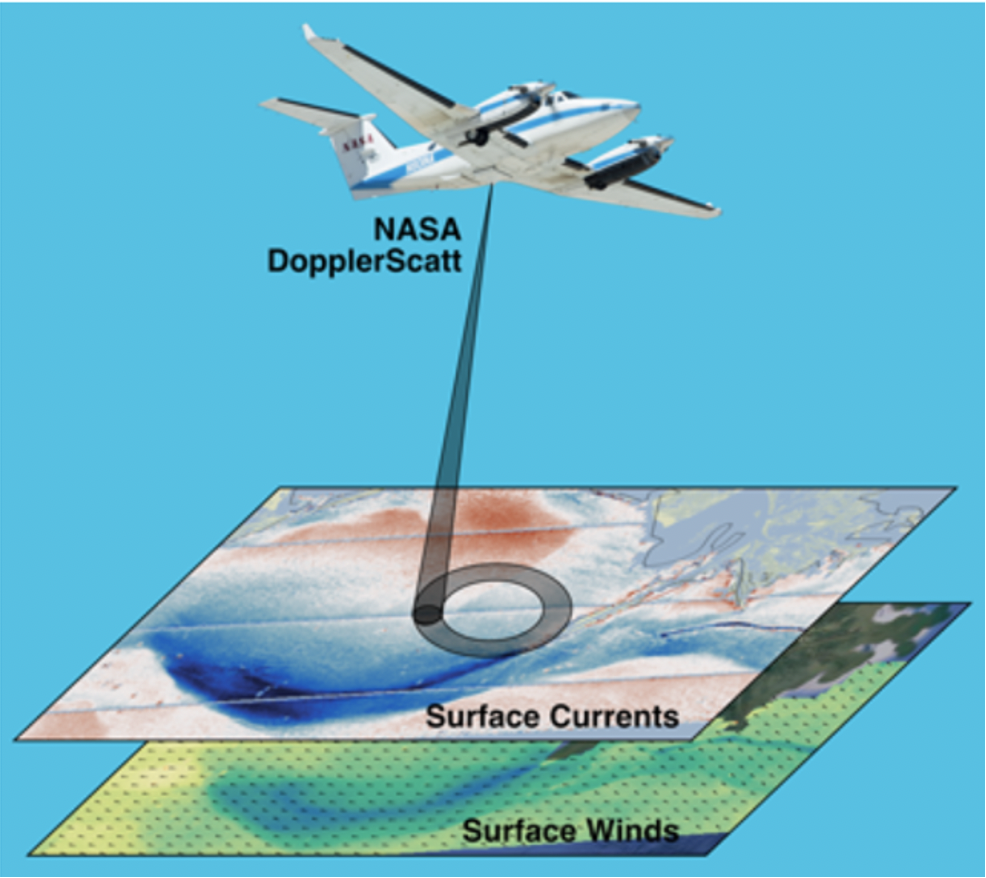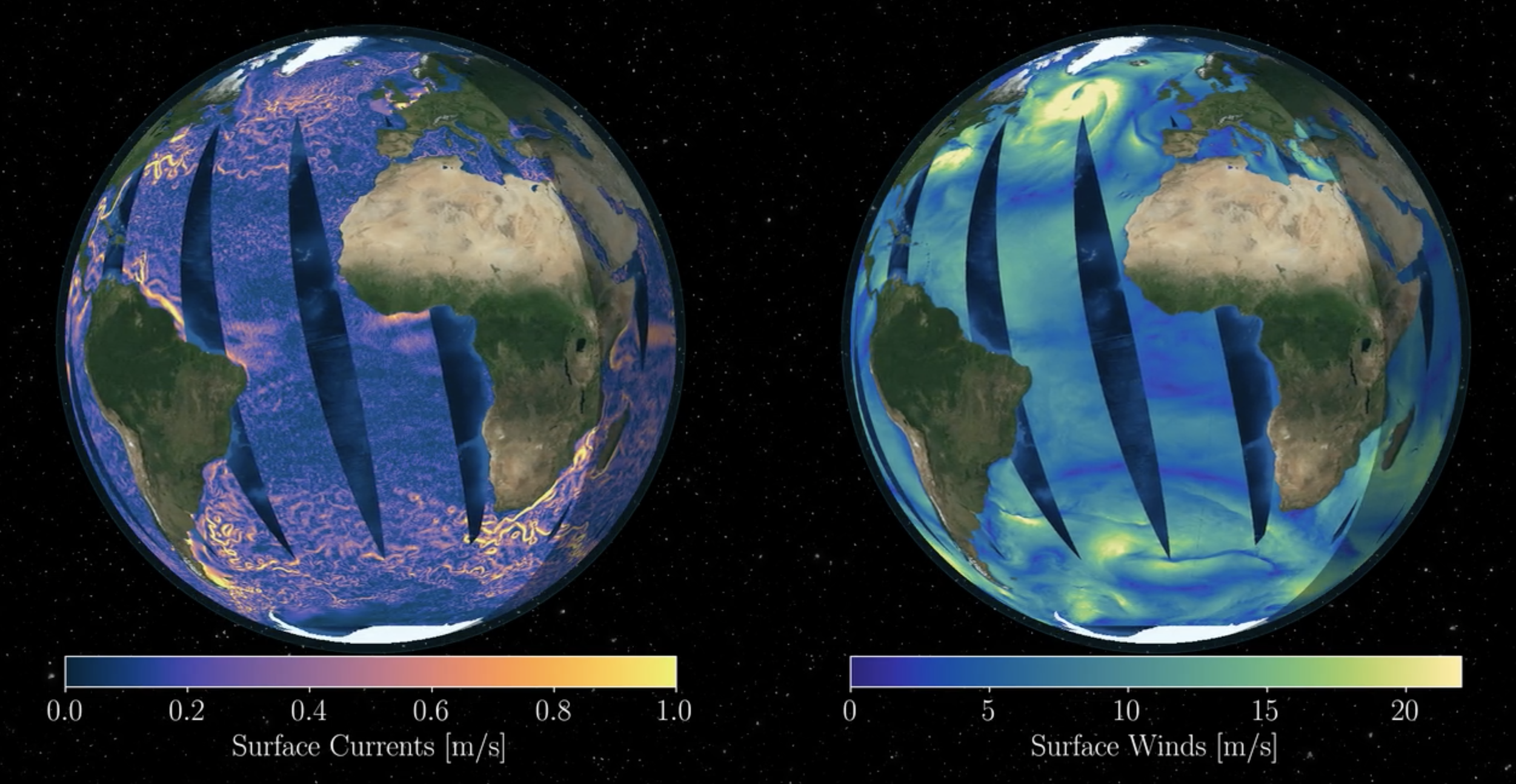ODYSEA (Ocean DYnamics and Surface Exchange with the Atmosphere): A revolutionary look at winds and surface currents
The ODYSEA satellite will bring into focus daily global surface currents and their interactions with winds to explore the Earth system and to improve weather predictions on short and long timescales.
About ODYSEA
ODYSEA is a Doppler scatterometer that builds on the legacy of the airborne DopplerScatt that is being used as part of S-MODE. ODYSEA's simultaneous measurements of winds and currents will offer new opportunities for science and applications
- Wind--current interactions
- Global total surface currents
- Near-real time data to meet operational needs in search-and-rescue, weather, and seasonal prediction
As of May 2024, ODYSEA is one of four candidate missions under consideration for NASA's Earth System Explorers Program. (Read the CNES [French Space Agency] press release in English or in French.)

The airborne DopplerScatt system provides heritage for the planned ODYSEA satellite system (image courtesy of S-MODE).
Wind and Currents Together
Check out the interactive story map to learn how wind and currents interact, and how wind exchanges energy with ocean surface currents. JPL put this together to accompany a paper by Hector Torres and co-authors (2023).
Explore
Use the ODYSEA simulator in github to test the possibilities. (Sign in to github first to gain access.) And let us know what emerges.

Webinar
Join the discussion: In the run up to submitting the ODYSEA proposal, the science team hosted a weekly webinar on Tuesdays at 8 am Pacific to advance community discussion of key science. Starting in Fall 2023, the webinar is continuing in an updated format, under the auspices of OASIS (Observing Air-Sea Interactions Strategy) and with a multi-satellite focus on Air-sea Fluxes from Space. Sign-up for email notifications here.


